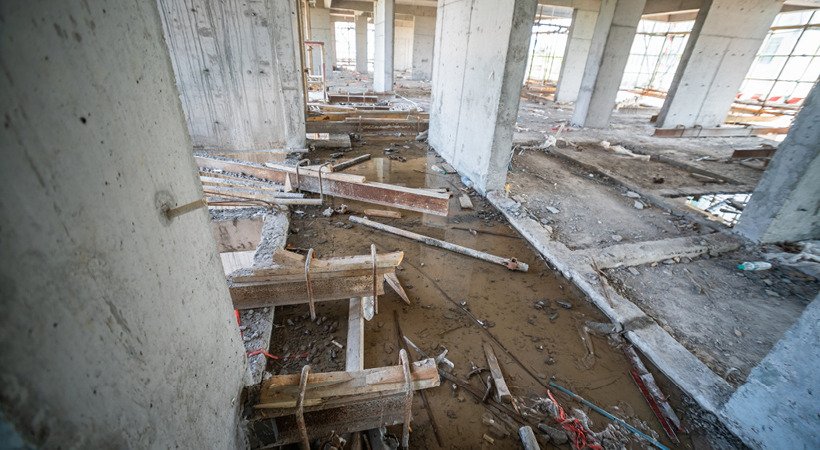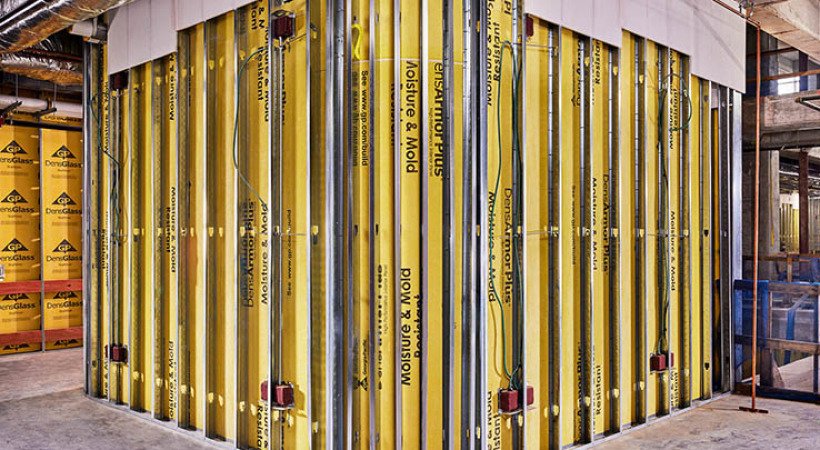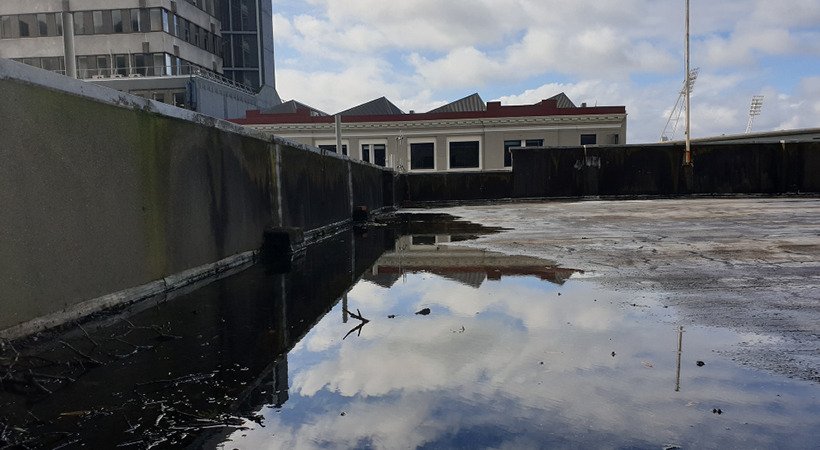Flood-Resistant Materials and the NFIP: What Every Building Owner Should Know


If you’re building in flood-prone areas, you’re basically playing defense from day one.
Whether it’s a new build or a renovation in an area prone to flooding or designated as a Special Flood Hazard Area (SFHA), the risks are real—and the stakes are high. While the hope is that you’ll never need to use flood insurance, it’s better to be over-prepared than not protected at all. The National Flood Insurance Program (NFIP) exists to help soften the blow when disaster strikes, but it doesn’t cover all significantly damaged parts of a commercial structure. That’s why it’s smart for architects, contractors and building owners to stay on top of building resilience before the water starts rising.
NFIP: A brief overview
The NFIP is a federal program managed by the Federal Emergency Management Agency (FEMA) that enables property owners, renters and businesses to purchase flood insurance. It also helps communities mitigate flood risks by enforcing floodplain management regulations.1
In addition to the insurance component of the NFIP, FEMA also provides guidelines and standards for building materials in flood hazard areas. These recommendations are part of FEMA’s broader approach to hazard resilience.2 The goal is to help ensure structures stand strong if they’re hit by a flood, earthquake or hurricane. In addition to FEMA’s guidelines, there are additional ways to add resilience to your structures to protect against flooding and severe storm damage, including hail. We’ll touch on that later. But first, let’s find out what NFIP flood insurance covers.
Insurance for commercial properties: calculations and coverage
Flood insurance premiums under the NFIP are calculated using a system called Risk Rating 2.0. This approach considers factors like property characteristics and location to determine flood insurance rates that reflect an individual property’s flood risk.3 Properties in SFHAs have a higher risk of water damage, higher insurance costs and stricter building codes.
NFIP insurance offers commercial properties up to $500,000 in coverage for the building and its contents. But these policies are considered “direct loss” and may not cover all destruction. This is why commercial businesses may purchase additional private flood insurance. Although the NFIP helps to insure a commercial building and its foundation, damage caused by moisture, mildew and mold, which a property owner could have avoided, is not covered under their Commercial Building and Personal Property Policy.4
Ways you can enhance building resilience
To mitigate the risk of flood damage, FEMA recommends durable, flood-resistant materials. Buildings located in flood-prone areas should use non-paper-faced gypsum boards for walls and ceilings. Using paper-faced gypsum boards is unacceptable for walls and ceilings in SFHAs.4 This is because the paper facing on drywall is organic material that provides a food source for mold and moisture. Paper also absorbs and retains moisture, creating the ideal environment for mold and mildew to grow and spread. Gypsum boards with fiberglass mat facings can help you avoid a mold infestation because fiberglass is not a food source for mold and mildew.
When building in a SFHA, building codes and private insurance may also require the use of flood-adaptive materials. Following the guidelines up front can help simplify inspections or claim processes in the future.
FEMA-accepted products
Within the Dens® Suite of Gypsum Products, DensArmor Plus® Interior Panels and DensShield® Tile Backer are both FEMA-approved, water-resistant materials. DensArmor Plus® Interior Panels use a fiberglass mat instead of the paper facings on the face and back of the board to resist mold growth. While no material can be considered entirely “mold-proof,” under the ASTM D3273 test method, DensArmor Plus® Interior Panels have scored a 10, the highest level of performance for mold. UL Environment also has both products listed in its Sustainable Product Guide, which utilizes microbial-resistant testing based on ASTM Standard D6329-98.
DensArmor Plus® Interior Panels are a great fit for multifamily and commercial projects—ideal for most interior walls. They can be directly attached with screws or nails to wood or metal framing (even over existing surfaces) and work on both flat and curved designs.


DensShield® Tile Backer, with its built-in moisture barrier, is another type of fiberglass mat gypsum panel. It was designed to help protect sub-floors and wall cavities if moisture sneaks in behind grouted tile. It meets the requirements of 2009 IBC/IRC Code for tile backers in wet areas and, unlike some other options, you don’t need to add a separate vapor barrier behind it.
Plus, DensShield® Tile Backer is easier to cut than cement boards and creates less mess during installation. It can be used in both multifamily and commercial structures; ceilings, walls and flooring; in bathrooms, lobbies, kitchens and more.
Protecting your roof matters, too
When people think about flood damage, they usually picture basements or ground floors—but your building’s roof plays a big role, too. In storm-prone areas, wind, rain and other debris can destroy a weak roof system, leading to serious interior damage.
You can help protect your commercial building during severe weather events with DensDeck® Roof Boards. Intended for low-slope roofing systems, DensDeck® Roof Boards have enhanced strength that can help resist impact from hail and flying debris, with a mat-to-core bond that helps protect against wind uplift during rough weather. They also have a flexural strength range from 100 to 200 LBF (pound-force).

Flexural strength determines the flex or bending properties of a material. Higher flexural strength can increase a cover board’s flute-span capability while guarding against wind uplift. This, in turn, helps protect your roof from membrane delamination and fastener withdrawal. Keeping the membrane intact limits water from getting into a building, which minimizes moisture for mold and mildew to thrive in. This is another way to avoid damage caused by mold and mildew—typically not claimable under NFIP insurance.
For the most extreme weather, DensDeck® StormX® Prime Roof Board can be used as a substrate board, thermal barrier, recovery board and cover board. It is FM classified for Very Severe Hail (VSH) in single-ply assemblies.
While navigating NFIP insurance can be a layered subject, the important thing to remember is that it doesn’t cover all damage, especially from mold and mildew infiltration. Set your commercial buildings up for success by protecting them (and your reputation) with reliable building materials that are resistant to water damage.
1https://www.floodsmart.gov/definitions#:~:text=National%20Flood%20Insurance%20Program%20(NFIP,of%20Federal%20Regulations%2C%20Subchapter%20B
2 https://www.fema.gov/fact-sheet/fema-qa-disaster-resilience-and-hazard-mitigation
3 https://www.fema.gov/flood-insurance/risk-rating
4 https://www.fema.gov/emergency-managers/risk-management/building-science/national-flood-insurance-technical-bulletins
